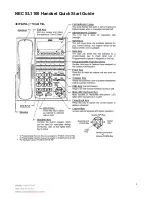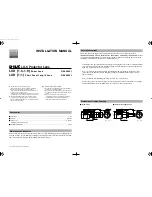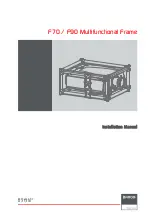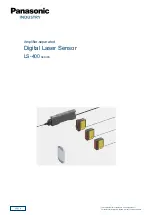
Connectors
Installation and Wiring
Initial Operation/Function Test
Choose a position away from heat and vibration. Stick the gyro with a double
sided foam tape to a smooth surface. The cables of motor, speed controler
and battery should be routed as far away as possible of the
. The
gyro axis of rotation must be positioned parallel to the vertical axis (main rotor
axis), the direction of rotation is irrelevant (see figure). Connect the tail rotor
gyro connector to the selected tail rotor channel output of your receiver.
If there is no further channel left for remote sensitivity
control just leave the connector open. In that case the gyro will work with the
sensitivity which has been adjusted by potentiometer (approximate gyro
effect range between 30% and 100%).
If your gyro works in the remote adjustment mode you must not forget that the
sensitivity range will also be influenced by servo travel limit adjustments of
your transmitter on the given gyro channel. If you want a regular operational
behaviour the full pulse length range of 1.0 to 2.0 milliseconds and a neutral
pulse of 1.5 milliseconds must be available, that corresponds on JR radios to
a servo travel of 150/150%, otherways you will not be able to achieve full
remote controlled sensitivity adjustments of whole 100% or 0%.
connections please see next page.
Put the tail servo stick and its trim tab into neutral position. Leave the
sensitivity input of the gyro open or deflect the relevant stick to its end
position (pulse length 2 ms), that is operate the gyro in normal mode at its full
sensitivity.
Now switch on the transmitter and subsequently the receiver power supply.
The
will now carry out the automatic temperature calibration.
During this process the gyro
be moved. After termination of the
calibration (approx. 3 - 5 sec.) the LED lights up permanently and the
connected tail servo executes a short twitch. The gyro is now ready for
operation.
In the conventional gyro mode the servo now reacts to angular movements of
the helicopter about the axis of rotation of the gyro with corresponding
counter-movements of the servo, while steering commands of the tail servo
stick are correspondingly obeyed by the servo.
Between disconnection of the receiver power supply and repeated
switching-on you should pause for at least 10 sec. The gyro should not be
exposed to violent temperature fluctuations; you can give rise to a repeated
temperature calibration process by switching the power supply off and on.
Profi Gyro
Profi Gyro
must not
If you
intend to utilize the remote sensitivity adjustment, plug the gyro sensitivity
connector into a PPM-receiver output with a higher channel number, that is
for instance into channel 2 or higher if the tail rotor connector has been
plugged into channel 1.
PCM receiver
The new
is the improved RC - helicopter gyro, developed on the
basis of the well-known and reliable Ikarus gyro family.
In a helicopter the gyro stabilizes the model about its vertical axis against
external disturbances caused by wind and torque fluctuations of the drive.
The
contains no wear susceptible moving parts, it works always
reliable and without wear on pure electronic basis.
Tail rotor control
-
high holding power
-
switchable from normal to heading lock operation
-
internal stick authority system (also "stick priority")
-
remote adjustable gyro/heading lock sensitivity
-
basic sensitivity adjustment by potentiometer
-
jumper for servo reversal
-
after switching-on automatic temperature self
calibration
-
control LED
-
operating voltage range + 3.5... 12 V
-
temperature range 32...122°F
-
weight approx. 0.8 oz.
-
outside dimensions approx. 1.5" x 1.6" x 0.7”
-
fine adjustment via PC interface and interface cable
(optional)
The
can work in 2 different operational modes:
1.) Conventional (normal) gyro mode.
2.) Holding mode (Heading Lock Mode).
The mode switching is accomplished via the sensitivity channel or, if no
channel available, by a jumper directly on the gyro. The selected mode can
be recognized as follows: Under normal mode conditions the servo arm
returns after a short command with the joystick or after rotation of the gyro
immediately back to its original position, in the Heading Lock Mode the servo
remains in its new position after the joystick has been released or the gyro
rotation has stopped. If in the holding mode the stick channel is not properly
trimmed (neutral position 1.5 ms) the servo arm will slowly or even faster drift
towards one of its end positions.
Under normal mode the gyro works like conventional gyro systems, that is it
immediately counteracts disturbances caused for instance by wind gusts. In
the Heading Lock Mode (heading hold system) the gyro tries to hold the
heading of the longitudinal axis determined by the pilot by nearly fully
adopting the tail rotor control. Hence when hovering the beginner must not
additionally concentrate on tail rotor control. A professional pilot can for
instance fly in gusty weather fast back-wards without the helicopter turning
immediately into wind direction.
The
comprises an internal automatic stick authority system, that
is the gyroscopic effect is highest at stick neutral position and decreases
gradually when the stick deflection approaches maximum (also called "stick
priority"). Any contingent stick authority system on the transmitter (ATV)
must be switched off.
Profi Gyro
Profi Gyro
Profi Gyro
Wing Gyro
Application
Properties of the Profi Gyro
Stick Authority System
Profi Gyro
Servo
Servo reversal
Maximum sensitivity
Control LED
PC
Holding mode on/off
To receiver
Tail rotor connector
To receiver
Sensitivity connector
Page 1
Impuls length of sensitivity channel
1ms
100%
Sensitivity (Gyro
effect)
Holding mode
Normal mode
1.5ms
2ms
Profi
Gyro
Servo
3
2
1
Corrective axis
04/99
Best. Nr. 720613
Profi Gyro
IKARUS Modellflugsport, Inh. Norbert Grüntjens, Brambach 36, 78 713 Schramberg / Germany, Tel. 07422 / 54001 Fax. 07422 / 54005




















